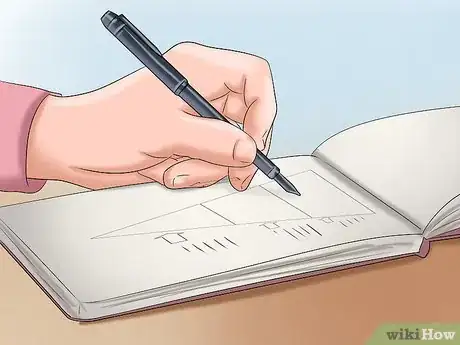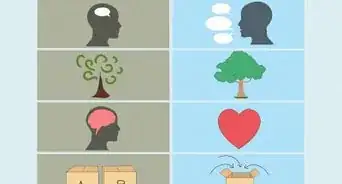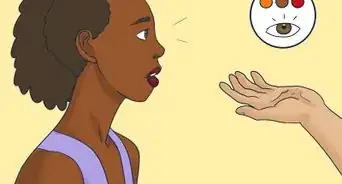X
This article was co-authored by Diane Stubbs. Diane Stubbs is a Secondary English Teacher with over 22 years of experience teaching all high school grade levels and AP courses. She specializes in secondary education, classroom management, and educational technology. Diane earned a Bachelor of Arts in English from the University of Delaware and a Master of Education from Wesley College.
This article has been viewed 26,047 times.
This is a brief summary of some of the important skills required of journalists. These are the skills that are taught in many entry-level college journalism classes. Having a good understanding of these fundamentals will help any writer decide if they want to pursue this type of writing.
Steps
-
1Learn to write with the “5 W’s”: who, what, where, when, why and how. They are the building blocks of every news story.
-
2Organize the story: Carefully and logically organize the article after you write the lead. (See below.) This often involves the use of interview quotations.Advertisement
-
3Write the main part of your story in the "inverted pyramid" style. This means that the most important information appears first in the story, and additional points follow in descending order of importance. This is the format used in most news articles, since the least important part of the story appears at the end and can be easily eliminated if necessary. This could happen if a timelier story develops suddenly or a new advertisement is sold, requiring some of the page space your article would consume if printed in full.
-
4Add a "lead" to the beginning of your story. The lead should summarize or suggest the main points of the article, so the reader can decide if they want to read the whole thing. Leads are typically one or two sentences and 30 to 50 words in length.
-
5Make a big impression on readers by being timely. Immediacy carries impact, as measured by the effect a story has on readers' lives. The bigger the impact, the bigger the story. News judgment is the ability to determine which stories are most interesting and important to a publications' readers.
-
6Use quotations: Cite someone’s exact words. Get word-for-word information from a reliable source. Then put those words inside quotation marks. A partial quote is helpful, too. That's where you use just part of a direct statement.
- Sometimes a direct quote is too long or complicated to be of use. In this case, you paraphrase. A paraphrase is the reporter’s summation of a source’s actual words. No quotation marks are needed in a paraphrase.
- Problems to avoid in using quotes include dull, obvious comments; remarks that echo a previous statement; quotes used as leads; a string of quotes run in sentence after sentence; curse words; and quotes taken out of context (where the words quoted can lead to a distortion of what the speaker was actually trying to say).
-
7Understand the meaning of "on the record": Determine whether your source will agree to let you quote them by name. This would be "on the record." "Off the record" means that the source has pertinent information but asks that you not use his or her name in the story.
- A famous example of off-the-record reporting occurred during the Watergate scandal in 1974. A high-ranking American government official (known to readers as "Deep Throat") spoke with journalists under the cloak of anonymity and offered information that led to the downfall of a president.
- Using off-the-record sources may be unacceptable in some newsrooms. If you face that dilemma, try to get confirmation of your information from another source who is familiar with the story and who will let you cite them by name.
-
8Understand open-ended versus closed-ended questions: Learn to use open-ended questions. They are often the best. They are designed to get a source to talk freely and reveal thoughts and feelings. Examples include: What is your philosophy of sports? What thoughts were going through your head the first time you rescued a drowning swimmer?
- Closed-ended questions can be answered either “yes” or “no” without further explanation. While useful for confirming information, they're not very effective at eliciting new information.
- "Softball" questions have their place, too. They are easy, non-controversial queries aimed at developing a rapport with the source and helping them to relax.
-
9Understand active and passive voice: Active voice is the way most people talk. Active and passive voices refer to the relationship between the subject and the verb in a sentence. In an active sentence, the subject is doing something.
- In a passive sentence, the subject does nothing. Instead, it is acted upon. The active voice makes your writing stronger and livelier. It's the style that is used in most news articles. For example, "the girls ate the pizza" is an active sentence. "The pizza was eaten by the girls" is passive.
-
10Detach yourself as a writer by using "third-person" narrative in most of your articles. An example of third-person writing: "a reporter conducted the research." The first-person equivalent would be: "I conducted the research." Keep yourself out of the story by using third-person narrative as much as possible.
- The idea is that once a reporter becomes a part of the story, it's harder to consider that reporter a reliable and unbiased source of information.
-
11Avoid plagiarism! This occurs when someone tries to pass off the words or ideas of others as their own (without attribution). A big danger for many reporters involves copying directly from the Internet. Even if they cite an Internet source, a reporter should re-write the information in their own words (thus avoiding the need for quotation marks).
-
12Avoid "reporter's opinion." Don't pick favorites. Don't complain about something without explaining the good points, too. Report the story honestly and accurately, and let the readers decide about right and wrong. Bias can involve the failure to present both sides of an issue fairly or the manipulation of facts to sway readers’ opinions. Avoid this, especially if you and your employer are interested in achieving and maintaining a reputation for unbiased reporting.
Advertisement
Warnings
- Learning to be an effective journalist takes practice. Newswriting is different from the "term paper" writing style learned in many high school and college courses.⧼thumbs_response⧽
- Above all, protect your sources' anonymity if they request it. That will help you (and the entire journalism profession) when trying to gather sensitive news in the future.⧼thumbs_response⧽
Advertisement
References
- Inside Reporting, by Tim Harrower. McGraw-Hill, 2012.
- Melvin Mencher's News Reporting and Writing, McGraw-Hill, 2010
About This Article
Advertisement





































































